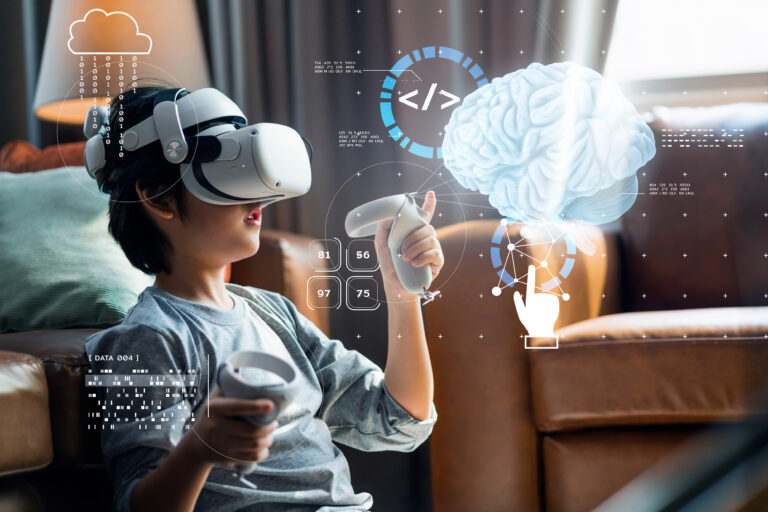4 Audiovisual Trends Shaping Learning Spaces

If you think about it, classrooms are the perfect places to explore audiovisual trends. After all, there is ample opportunity to engage students better and get them interested in learning. Here is a look at some of the most current AV trends inspiring design in learning spaces.
1. Virtual & Augmented Reality
There are few spaces that have not been touched by virtual reality (VR) and augmented reality (AR) yet. As innovations like the Metaverse continues to take shape, the VR and AR industries forecast exponential growth.
One example of this is happening with the Lakota Local Schools’ innovation lab, where students use Merge Cubes, a VR technology that enables them to interact in 3D with virtual objects including the human body, the solar system, the layers of the Earth, and volcanoes. Other education centers and interactive spaces would be wise to follow suit and try similar technologies.
2. Interactive Displays
One of the most difficult parts of effectively teaching in any space is holding the pupil’s attention. Fortunately, many learning spaces are now incorporating interactive displays that help to do just that.
Integrating video walls, for example, can turn a static lesson into a dynamic experience. Interactive displays also give students a chance to use their sense of touch, in addition to their senses of sight and sound, which further promotes engagement.
3. Projectors
With wireless technology options increasing, and tech, in general, becoming more affordable and accessible, many assembly institutions, like museums and learning hubs, are incorporating more immersive technology. Instead of focusing on one- dimensional viewing experiences, they are experimenting with letting audiences interact with a more dynamic environment.
Untethered technology enables such freedom, and corresponding movement can go a long way in stimulating blood flow and keeping audiences alert and engaged. One example of this includes a 360-degree Sky Dome installation we completed at the Heard Museum, Substance of Stars, focusing on Immersive Indigenous Storytelling.
4. Quality Technology
It used to be that students, particularly in higher education, would sit through the same class format time after time: viewing static slides on a projector while the instructor relayed the lesson. The quality of the projector and connected audio would often vary.
Today, this has changed. There is more of a focus than ever on improving the quality of the devices in connected learning spaces. Specifically, displays that reduce glare and increase brightness are being prioritized, along with audio that’s crisp, clear, and designed to reach every individual in the room, no matter where they are sitting. With this emphasis on quality, students are in a better position to hear and see what is being taught and to truly focus on learning, free from distractions.
Interested in exploring how audiovisual trends can be used to maximize classroom AV design? We would love to help!
Interested in how AV can transform your learning space in a big way? Let’s chat about your next project.
